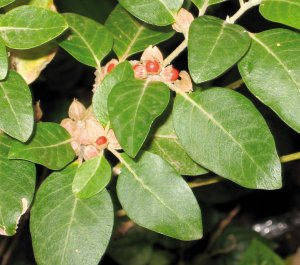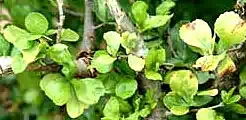Table of Contents
BRAHMI
Bacopa monnieri – Ayurvedic Herb

Brahmi , which is named as Bacopa monnieri which has got very good action on improving intellect and also benefit in maintaining good voice, useful in digestive , circulatory disease,
It is extensively seen in all part of India, which is best used for insanity.
LITERARY REVIEW
Acharya Charaka has put it under Tiktaskanda and Asthapanagana,where as Acharya Susrutha has put it under Tiktavarga.
According to Acharya charaka, it is externally used to enhance strength of body, mind and digestive power, complexion of body and quality of voice. Acharya susrutha said that it is beneficial for post digestive effect & good for pitha.
SYNONYMS
Soma – Used in Yajna and preparation of Soma rasa.
“Sudravajramtribhihivarno soma Upayokthavanga ||”
Saraswathi– Increase intelligence and Medhya .
Brahmi – which is related to Lord Brahma
Kapothavanka -Attracted by Kapotha birds
Brahmasuvarchala – A variety of Suvarchala
Somavalli – Drug used by Lord Brahma as a creeper
Divya– A celestial plant
Medhya –Help in improving intelligence
Matsyakshi – Spread on marshy area
According to Raja Nighadu –“ Brahmivayasthamatsyakashi
Meenakshisomavallari ||”
Brahmini – Liked by Lord Brahma
Sarpakshi according to Dalhana
“SarpakshiLohithaPushpasankhapushpibhedana||”
Jalaneem -Jalodbhoothasyamapushpijalasaya .
That which resides in marshy area.
OTHER SYNONYMS
- Saradi
- Swasthara
- Divyateja
- Mahoushadhi
- Lavanya
- Lavanchika
- Sathyavathi
- Smarini
- Brahmacharini
- Sathyanama
- Brahmasoma
- Bharathi
- Mandookaparni
- Mandooki
- Dardhurachada
- Sunama
- Munika
- Tweshtri
VERNACULAR NAMES
English – Water Hyssop or Indian Penny wort
Hindi – Brahmi
Kannada – Oudegala
Malayalam – Brahmi
Bengali – Birami
Tamil – NeeraBrahmi or Vallarei
Telugu – SambraniChetada or Bokkader
Marathi – Brahmi
PART USED
WHOLE PLANT
DOSAGE
10 – 20 ml
CHEMICAL COMPOSITION
vBrahmine (0.01 – 0.02%), beutinic acid, gamma sitosterol, stogmasterol, mannitol, saponin, bacoside A & B, herpestine, alkaloid, hersaponin, betilic acid, d-mannitol, B-sitosterol.
vAlkaloid brahmine in therapeutic action resembles strychnine , but is less toxic
vThree bases isolated B1 oxalate , B2 oxalate, B3 chloroplatinate and sterol
vHersaponin possesses cardiotonic, sedatine , spasmodic properties .
PROPERTY
Rasa : Tikta
Guna : Laghu
Virya : Sita
Vipaka : katu
Prabhava : Medhya
Dosa karma : Kaphavatasamak
KARMA
- Sodhahara
- Vedanasthapana
- Vishagna
- Medhya
- Samaka
- Akshepahara
- Amapachana
- Hridya
- Hridayothejakara
- Kandugna
- Kaphagna
- Kushtagna
- Kandya
- Muthrala
- Arthvajanana
- Garbhadharana
- Swedajanana
PRAYOGA
Neuralgia
Epilepsy
Insanity
Mental illness
Indigestion
Ulcers
Constipation
Asthma
Bronchitis
Infertility
Impotence
Premature ejaculation
Filariasis
Diuretic , laxative
Hoarseness
USAGE ACCORDING TO THE SYSTEM
- Digestive system :-
Treatment for irritable bowelsyndrome and other similar disorders.Those are related to the intestinal tract. Consistent , diarrhea, upset ,stomachic, indigestion and heat burn.
- Circulatory system :-
In circulatory illness to remove toxins of blood. In more recent years brahmi has been used as a treatment for a variety of circulation disorders.
- Integumentary system:-
Used in dermatitis ,psoriasis , eczema , abscess and ulceration.
Help in promoting growth of hair, control of dandruff.
Brahmi oil can prevent split ends and discoloration of the hair.
It is used as control of mind in anxiety
It helps in maintaining normal body temperature, help in digestion.
In case of toxicity used as a controller.
- GI system :-
Used in indigestion , Amadosa , constipation.
CLASSICAL USES
Sparsanjathwa : – Powder made out of mixture of Vacha, trivrt and brahmi is take along with madhu and sarpi.
Swarya:-Swarasa prepared out of Brahmi is taken along with madhu.
Unmada :- Decoction prepared out of panchanga is taken orally
Apasmara and Unmada and Swasabhanga : It is used internally
In Amavatha :-Swarasa is based externally
Swarasa can be taken orally with Madhu for Kasa, Prathisyaya in children
In Avasada and Manasikadourbalya, pathrachoorna is used.
In apasmara and othermanasikaroga , brahmigrutha is used.
Folklore Uses
-In insanity ,brahmi , kushmanda , vaca and sankapushpi juice of often separately mixed with Kushta and honey removes insanity.
– In case of epilepsy old ghee processed with brahmi juice, vaca, kushta & sankapushpi alleviates insanity, inauspiciousness, epilepsy and sinful condition.
– Brahmi leaves taken as its is in easy morning in empty stomach as medhya.
SUBSTITUTES AND ADULTERANTS
Cantella asiatica
Bacopa Monneri is often substituted for each other.
RESEARCH STUDIES
Brahmi has shown hypotensive action and reduced the clinical feature of anxiety neurosis. It has also produced reduction in the level of plasma cortisol and urinary catecholamines in the cases of anxiety neurosis. When studies experimentally for its psychotropic effects in rats, it has shown significant barbiturate hypnosis potentiation effect and caused a reduction in the level of acetylcholine catecholamine in the whole brain tissue.
YOGAS
- Brahmi grutham
- Brahmi rasayanam
- Saraswatharisha
- Brahmi kushta
- Brahmi Taila
- Brahmi prasa
- Brahmi paka
- Brahmi vati
ECOLOGY
It commonly grows in marshy are throughout India, Nepal, Sreelanka, China, Taiwan and Vietnam and also found in Florida, Hawali and other southern states of the USA where is can be grown in clamp conditions by the pond or bog garden.
AGRO CLIMATIC REQUIREMENTS
The species requires waterlogged marshy lands and humid climates. The species thrives well in lime rich solids.
PROPAGATION
The species can be propagated both by seeds and vegetative means. The stem containing 4-5 nodes, soaked in slurry water or roots promoting hormones (Keratin) can be planted directly in the fields. The stem sprouts and get established as seedling soon. The varieties available for propagation are subodhak and praggashakti.
TRANSPLANTING AND AFTERCARE
The transplanting of rooted cutting is done in the rainy season at 2×2 m. The application of fertilizers NPK(50-100gm) irrigation after sowing or transplanting and in the dry season helps in proper growth.
Harvesting is done in October- November and yield stars coming after 2 years of transplanting.
PHARMACOLOGICAL ACTIONS
Used in treatment of Asthma, epilepsy, insanity.
It is reported that, Bacosides A& B enhance the protein kinase activity and a new protein synthesis especially in these parts of cerebrum associated with long term memory and consequently enhancement of recall levels, learning and treatment of dementia.
MACROSCOPIC CHARACTERS
Color : Green
Taste : Bitter
Size : Leaves are about 2 cm.
Shape : The leaves are fleshy, obovate ,
Alternate , simple ,entire with broad apex, sessile, their lower surface in dotted.
THERAPEUTIC ACTION
– Used to improve intellect, used for epilepsy, insanity and other nervous diseases. Also it is diuretic and aperients
– It is laxative , useful in bed ulcers, tumour, ascities, enlargement of spleen. It is a potent nerve tonic, cardiotoxic & diureteric found very effective in cases of anxiety neurosis.
– It has an anti anxiety agent having adaptogenic effect. It is aphrodisiac , aperients, used in the treatment of asthma, hoarseness.
– Indicated against dermatitis, anemia, diabetes, cough, dropsy, fever, arthritis, anorexia , dyspepsia & emaciation.
– Stem and leaves are brain toxic, which sharpens dull memory and are used in catarrhal complaints and in snake bite also as a safe cardiac toxic.
– Leaves are used as diuretic and aprecient.
– The juice of leaves is given to children for relief in bronchitis and diarrhoea.
– Paste of leaves is used as remedy for rheumatism.
– Decoction of leaves is used in cough.
– It is also capable of imparting youthful vitality and longetivity. It forms an important ingredient of Ayurvedic preparations.
– For pus discharge from ears, leaf juice dropped in the ear – 2 to 3 drops before bed time for 4 days.
– Leaves and flowers are used in form of decoction mixed with honey and taken orally with milk in case of general diabetes.
– Leaves are boiled, tied hot over abdomen is best used for abdominal pain.
– Decoction prepared out of leaves is used in Rheumatism.
– Whole plant in crushed and taken orally in urinary inflammation.
– Decoction prepared out of Panchanga is used in case of mental weakness.
– In case of epilepsy – brahmi juice is taken with milks.
– In insanity, brahmi juice when taken along with Kushta powder and honey relievers insanity.
In calculi, brahmi leaf, gokshura, Yasti are taken together







